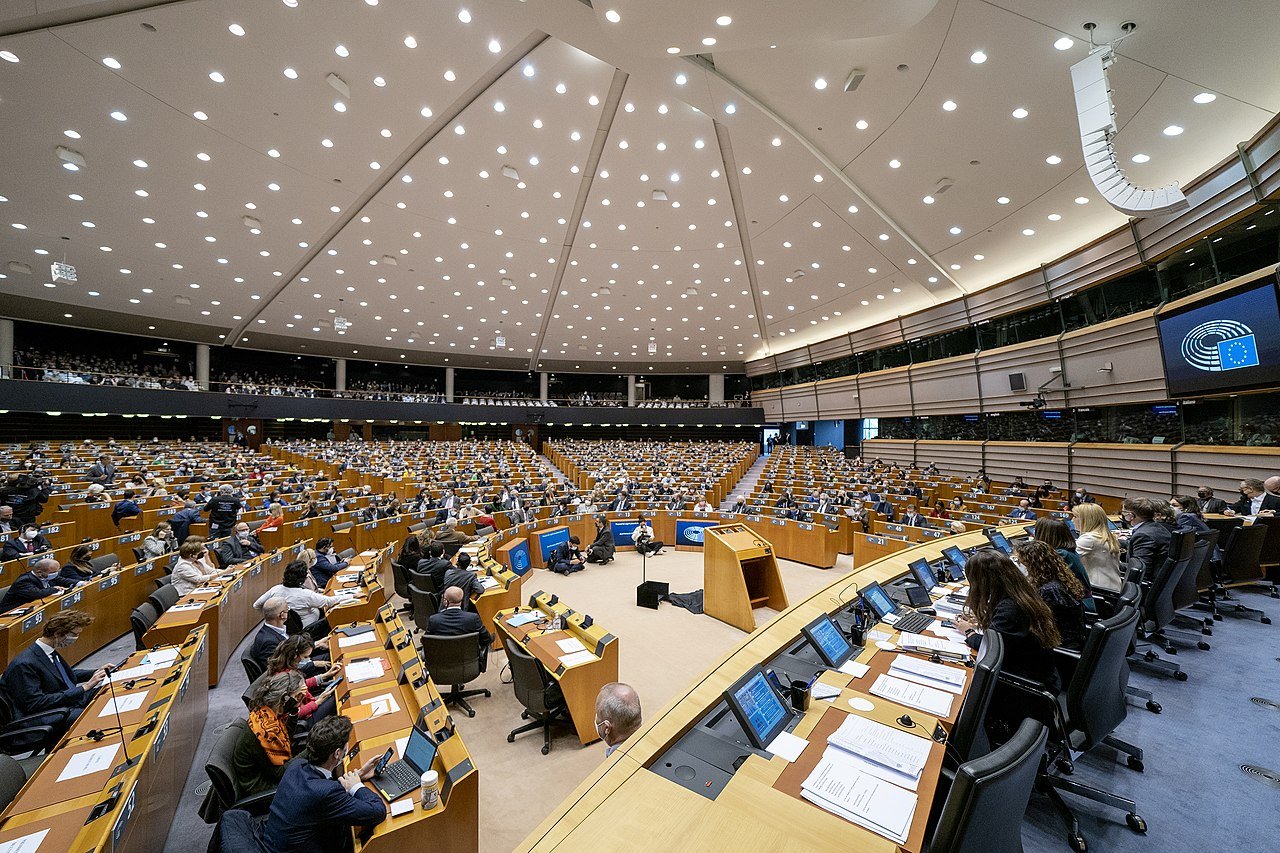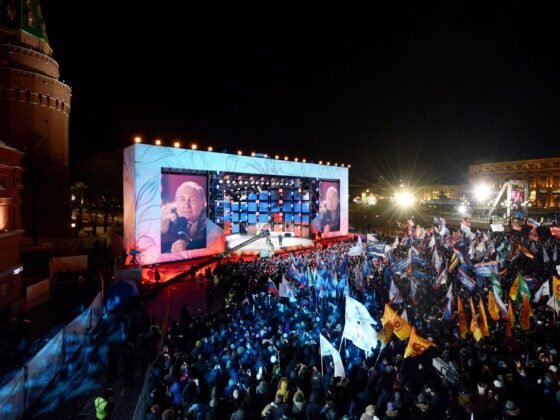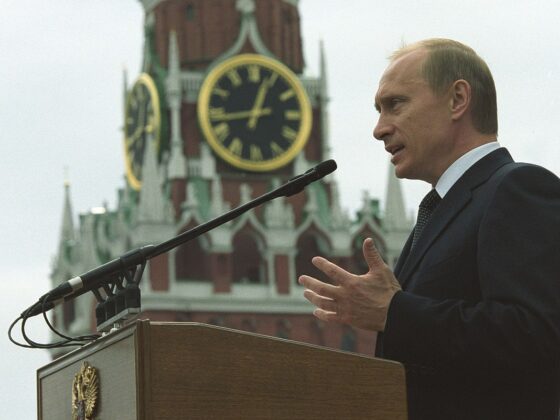In mid-May, the European Commission introduced its “REPowerEU” plan, a response to recent developments in regional and global energy markets and, mainly, disruptions caused by the Russian invasion of Ukraine. It is remarkable that the Commission so openly named Russia as the main issue and driver of the proposed policies. It is also significant that the Commission recognized current geopolitical developments among the key factors influencing EU energy security. After years of focusing on the internal workings of its energy markets, this is an important qualitative shift in perspective. Over the past three decades, the Commission gradually introduced and oversaw rules that replaced rigid supplier-consumer relations with a fluid market driven by the demand-supply nexus. Such a change was notable, especially in natural gas, where the incumbents dictating the conditions, Gazprom among them, were replaced by a competitive market overseen by the Commission.
During this time, Western European EU members also grew apart from their Eastern peers in understanding what energy security actually means. While those in the West saw energy security through the lens of a functioning market capable of distributing supplies efficiently, Eastern EU members remained concerned about the security of external supplies. While the “old” EU members generally did not see the point of obsessing about the origins of gas, “new” members felt uneasy about receiving the majority of their supplies from Russia. Many of these states have had a troubled history of relations with Moscow. Taken together, the Russian attack and the ensuing crisis have remarkably aligned EU members behind the effort to wean themselves off their troubled import dependence. It is worth taking a closer look at the measures in the REPowerEU plan to see if and when they may help the Union shake off the burden of Russian supplies. From the opposite perspective, Russia will try to find new customers in Asia with its market position in Europe deteriorating. The interplay of the EU´s divorce from Russian gas and Russia´s race to reach Asian customers will be among the key trends in the energy sphere in the following decade.
REPowerEU: Bold Ambitions and Tight Schedule
The EU plan is significant for outright recognizing the geopolitical situation that directly influences the bloc’s energy security. Not only does it show the Commission´s realization of the importance of external factors for the internal market, but it also hints at the very real possibility of the EU being more active in the external dimension of energy security. Clearly, the Commission sketched out a plan that should lead to the emancipation of the Union in the external energy policy. Russia´s aggressive invasion of Ukraine made it clear that energy security is closely entangled with foreign policy. As such, energy security inevitably became a part of the EU´s external relations.
It is outstanding to see the Commission showing initiative in the sphere that member states have carefully guarded against communitarization (i.e., becoming part of EU policies) for so many years. And once again, geopolitical reality is forcing the EU to readjust. However, it takes two to tango. As much as the discussion often revolves around the potential threat of Russia turning off the tap to Europe, the supply sword has a double edge. Russia will need to find new buyers if European relationships become increasingly severed. With the REPowerEU plan, the Commission is trying to stay a step ahead and decrease its vulnerability before Russia can press the bloc’s back against the wall.
The EU imports between 155-170 billion cubic meters of Russian gas annually (bcma), accounting for 40 percent of its natural gas imports. Therefore, this is the figure the EU needs to replace with other sources or means. Certainly, it will not be an easy task. Fortunately, the REPowerEU plan builds on the measures in the EU’s 2021 “Fit for 55” green deal package that seeks “climate neutrality” by 2050. This decision is important. The REPowerEU plan has the “Fit for 55” measures as its common denominator, already backed by political support. This is a significant dynamic since it provides programmatic efficiency and a clear answer to those who pondered abandoning the decarbonization policies at the beginning of the war.
Incorporating the package as the stepping stone for cutting ties with Russia shows what is now the dominating discourse in the EU—decarbonization strengthens the EU´s energy security and not the other way around. Unsurprisingly, the package relies on renewables, doubling down on their role by promising to increase their use by another five percent to 45 percent by 2030. In the past, the Central and Eastern European (CEE) states were not overly keen to agree to higher commitments to renewables. Although negotiating more ambitious goals (a higher percentage) will not be easy, with the imminent security threat as a new major impetus, it appears that even the carbon-intensive CEE states will be more willing to make concessions than before the war. As a sweetener, the Commission has tried to be forthcoming by offering a somewhat relaxed phase-out timeline for coal and, notably, recognizing the importance of nuclear energy, which may win even more support.
The plan also heavily relies on sourcing gas imports from non-Russian suppliers. It counts on additional LNG supplies (i.e., Liquified Natural Gas, typically delivered by tankers, needing liquefication facilities on the side of the export terminal and regasification unit at the port of landfall), including from the United States. Among the most concrete outcomes of the ongoing negotiations so far is the U.S. promise to deliver up to 50 bcma of LNG at least until 2030. That is almost 30 bcma more compared to 2021 and an additional 13 bcma more than what was promised for delivery this year. Fulfilling the promise will not be easy. The LNG market is getting tight, and the competition among consumers is intensifying. Although U.S. gas production is expected to pick up and grow into the next year, the demand will be high, especially in Southeast Asia, when China may come out of its lengthy COVID-19 lockdowns.
Another question concerns the U.S. producers´ willingness to expand their production under growing pressures to decarbonize the energy sector. The bottom line is that although U.S. LNG is a significant contribution to the EU´s import portfolio, it is far from solving its dependence on Russian supplies and may not last as long as the EU would want. Despite the probable faster phase-out of natural gas in the longer run, there will be a serious need for denser and more flexible gas infrastructure in the short- to mid-term outlook. That will put a strain on member states as well as on the Commission´s natural gas Projects of Common Interest (PCI) policy and the projects it involves, which have often struggled with viability in the past.
Nevertheless, looking at the proposed measures, the EU may indeed substantially decrease its dependence on Russian gas supplies. The measures, combined with a delayed coal phase-out, more flexible infrastructure, and import of non-Russian gas suggest that a 40 percent decrease in Russian supplies by the mid-2020s is very much possible. The raging war on the EU’s borders is likely to accelerate these efforts.
The longer-term outlook, however, is unclear. Although the group of goals beyond 2027 only includes a switch to green hydrogen, not all policies will likely be implemented in time, and some of the mid-term measures might drag on longer. These are likely to include capital-intensive and complex structures such as new LNG terminals, related infrastructure, and possibly larger energy storage facilities. Ramping up solar panels and wind power may also stretch into the second half of the 2020s, given the current underdevelopment of these resources in several, mainly CEE, countries. The switch to green hydrogen, planned as a long-term policy, is unlikely to make a notable contribution before the decade’s end.
The political goals of the plan, too, are opaque. The plan calls for tighter coordination between national policies and on EU-level regulatory and infrastructure measures. The deep split between supporters and opponents of Nord Stream 2 clearly showed that the absence of close coordination between members is an issue. The plan also pleads for joint energy diplomacy. This provision is related to coordination but cuts even deeper into individual states´ interests. At this point, even though the EU might have a common decarbonization goal, for the 27 members, each having a distinctive energy mix, common energy diplomacy is still a longshot. Last but not least, the plan calls for multilateral cooperation with like-minded partners on solving supply security issues on the international level. As much as such a call may seem like a voice of reason, it is questionable to what extent the call for multilateral cooperation will be reflected in an increasingly competitive environment, driven by particular geopolitical interests.
Russian Alternatives: It´s Complicated
The other side of the current EU-Russia split is the impact on Moscow’s ability to find alternative markets. The obvious choice for Russia is Asia, mainly China, where gas demand is expected to double by 2035. Gazprom, as the Russian pipeline export monopolist, thus builds the key new pipelines to reach Chinese customers. Other Asian countries, including India, may also play a role, but they are smaller in terms of expected supplied volume and thus do not provide as much of an incentive to build expensive pipelines. These markets will also receive more Russian gas in the future, but likely in the form of LNG deliveries. For Russian pipeline exports, the Chinese market is clearly the main prize in Asia.
Although the current high gas prices help Gazprom earn solid revenues despite the reduced gas flows to several European countries, in the longer run, the shrinking share of sales in Europe, Gazprom´s most important market, will become a serious issue for the Russian gas giant. With the EU´s now accelerated departure from Russian supplies, Gazprom and other Russian gas exporters will need to find new customers. Unfortunately for them, indicators show that a Russian energy pivot to Asia would not easily replace Europe in terms of volumes and income. As former CSIS energy analyst Nikos Tsafos wrote, “The Asian pivot can only deliver so much.” It would take much more than just flipping a switch, as the sources and pipelines supplying Europe and Asia are not the same.
Although Russia has several options how to increase its gas exports to Asia, they are far from being non-problematic. In terms of pipelines, the main outlet for Russian pipeline gas headed to Asia is now the Power-of-Siberia pipeline, an east Siberian pipeline with the eventual capacity of 61 bcma when finished. Other projects with the potential to supply Russian gas to China include the Sakhalin pipelines; however, the pipes in this area still struggle with technical and logistical issues and will take years before becoming fully operational. Obviously, these projects tap into different gas fields than those feeding Europe and will not solve the issue of stranded gas when the EU turns further away from Russian supplies. The alternative outlet is the proposed Power-of-Siberia-2 pipeline, tapping into West Siberian sources that now feed the pipeline infrastructure leading to Europe. However, this massive, 2,600 km (1,600 mile) long pipeline with a projected capacity of over 50 bcma is in its early planning stage and has an unclear future.
Russia´s gas exports to Europe are dominated by Gazprom´s pipeline deliveries, but the story is different for Asia. Here, LNG delivered by seaborne tankers will play the key role in reaching customers outside China. Gazprom does not have a monopoly in LNG as it does in pipeline exports and will thus face competition from other Russian companies competing for the Asian markets. In terms of LNG export volume, Gazprom plays second fiddle to Novatek, a private-owned company, along with several other minor players. The actual expansion of the Russian LNG export capacity is progressing slowly.
The projects that should add over 20 bcma of export LNG capacity (Novatek´s Arctic 2 project and Gazprom´s Ust-Luga in the Baltic Sea) are still incomplete and considerably dependent on foreign technologies that the Russian companies may be denied as a result of the Western sanctions. The other planned projects are much more unclear and similarly dependent on imported technologies. Russia currently sends around 20 bcma to Asia, with an additional 20 bcma going to Europe. It should not be a problem to sell the “European” volumes in the growing Asian markets in the future, although Russian suppliers will face ever-growing competition here.
Therefore, in the immediate future, Russia could have a total of 80 bcma export capacity to supply non-European customers consisting of Power-of-Siberia and LNG capacity currently used to supply Europe. However, only about one-fourth would be an additional capacity capable of redirecting European gas supplies elsewhere, mainly as LNG. In the mid-term outlook, the volumes supplied to non-European customers can rise to 100 bcma with the additions constituted by new LNG export capacities. That way, the volume of gas potentially shifting from Europe elsewhere could rise up to 40 bcma, mainly as LNG.
The key project that would ultimately help Russia reorient a large volume of its supplies is the abovementioned Power-of-Siberia-2 pipeline, which would send the gas slated originally for Europe to China. It has to be noted, though, that the Power-of-Siberia-2 project is still in the early stage. Given that the EU may decrease its Russian gas imports by some 60-70 bcma by the mid-2000s—the timelines of the EU´s Russian gas phase-out and Russia´s reorientation clearly do not align. West Siberian infrastructure may not be enough to redirect the gas flows seamlessly and may thus constitute a bottleneck, potentially leaving substantial volumes stranded.
Conclusion
The phase-out of Russian gas from EU markets as outlined by the REPowerEU plan will not cut EU-Russian supply ties immediately but will have a substantial impact on Russian gas sales as soon as the mid-2020s. If Russia wants to alleviate the impact, it needs to find alternative buyers, particularly in Asia, with China being the key customer. Along with infrastructural hurdles, the position of Russian exporters will be much less stable in Asia than it has been in Europe. Gazprom is expected to take the biggest hit as Russian supplies to Europe will decrease in the coming years since it will lose an established market role in Europe. But even if Russian exporters eventually manage to place volumes similar to those now sold in Europe on the Asian market, the revenues, considering the costs of such endeavor, may well be lower. The structure of Russian exports will also change, with Gazprom playing a smaller role than in the European market. In any case, the price of Russia’s export overhaul will be high, the outcomes will be uncertain, and it will likely be unable to fully make up for lost European volumes and mainly revenues.
Martin Jirušek is Assistant Professor at Masaryk University, Czech Republic, and Managing Editor of the Czech Journal of Political Science. He is currently a Fulbright Visiting Researcher at George Washington University.











